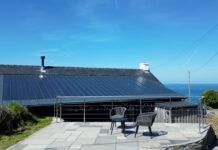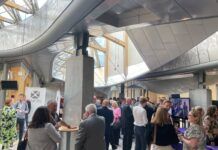In a letter to the Prime Minister, reprinted at the end of this release, leading fire safety experts and advocates have urged the government to immediately implement three important regulatory changes that will significantly improve fire safety for high-rise and high-risk buildings, such as schools, hospitals and care homes.
For these types of buildings, the fire safety experts urge the government to require immediately that:
- Only non-combustible cladding and insulation be installed;
- They be fitted with automatic fire sprinklers; and,
- All new buildings of these types have alternative escape routes.
Signatories include George Clarke (architect); European Fire Sprinkler Network (EFSN); Jane Duncan, chair, RIBA Expert Advisory Group on Fire Safety and former president of the RIBA; Mineral Wool Manufacturers Association (MIMA); Ronnie King OBE, honorary administrative secretary and principal adviser to the All Party Parliamentary Fire Safety & Rescue Group and former chief fire officer; British Automatic Fire Sprinkler Association (BAFSA); professor Richard Hull and professor Anna Stec from the University of Central Lancashire; professor Anne Power from the London School of Economics; and Sam Webb, architect and RIBA Expert Advisory Group on Fire Safety member.
The signatories acknowledge official reviews are underway, but ten months on from the Grenfell fire the UK is said to be no closer to a safer system of fire safety regulation. These steps would reportedly substantially reduce the risk still facing many buildings in the UK, and reassure the many families and individuals living and working in high-risk buildings across the country.
Architect, George Clarke, said: “The rules for how we build safe homes, offices, schools and hospitals have for many years been far too open to interpretation. This has led to poor design decisions that have compromised fire safety and put lives at risk. What we are arguing for could be implemented tomorrow, would be extremely effective in making buildings safer, and help prevent a tragedy such as Grenfell ever happening again.”
Professor Richard Hull, professor of Chemistry and Fire Science at University of Central Lancashire said: “Grenfell has left no doubt about the dangers of combustible façades on tall buildings. The recent ABI report shows the problems with the current testing regime. Until they are resolved, we cannot endanger more people by allowing combustible materials to be put on the outside of high rise and high-risk buildings.”
Alan Brinson, executive director of the European Fire Sprinkler Network said: “Sprinklers are highly effective fire safety systems. They are not expensive and have been fitted in many existing buildings. The public recognises all this and supports their wider use. Wales already requires sprinklers in all new housing and in Scotland there is a proposal to require them in more buildings. All eyes are now on England.”
Sarah Kostense-Winterton, executive director at MIMA, added: “We’ve advocated for years in support of using non-combustible cladding and insulation that can inhibit the spread of fire and won’t emit any significant amounts of toxic smoke. Non-combustible materials can help contain a fire, making the difference between a fire in a building and a building on fire. The government review and inquiry will run their courses, but there is every reason to make these crucial and logical changes straightaway to ensure that buildings are being constructed in a safe manner. The government must lead from the front by taking action.”
Letter to the Prime Minister
We are united by our resolve that a tragedy like Grenfell Tower must never happen again. Ten months on, we are deeply concerned that so little has been done to prevent another fire.
High-rise and high-risk buildings such as schools, hospitals, care homes, sheltered housing and residential blocks must be our immediate priority. To protect public safety in these types of buildings, we ask the government to implement the following changes urgently:
- That only non-combustible cladding and insulation be installed;
- That they be fitted with automatic fire sprinklers; and,
- That all new buildings of these types have alternative escape routes
The official inquiries and investigations will run their course, but we must not wait. We believe these common-sense measures will help protect people’s lives and the buildings in which they live, work, learn, and recover. We urge you and your government to implement them immediately.
Yours sincerely,
George Clarke, architect
Alan Brinson, executive director, European Fire Sprinkler Network
Jane Duncan, chair, RIBA Expert Advisory Group on Fire Safety and past president of RIBA (2015-2017)
Professor Richard Hull, professor of Chemistry and Fire Science, University of Central Lancashire
Ronnie King OBE, honorary administrative secretary and principal adviser to the All Party Parliamentary Fire Safety & Rescue Group and former chief fire officer
Sarah Kostense-Winterton, executive director, Mineral Wool Insulation Manufacturers’ Association
Keith MacGillivray MBE, chief executive, British Automatic Fire Sprinkler Association
Professor Anne Power, LSE Housing and Communities, London School of Economics and Political Science
Professor Anna Stec, professor in Fire Chemistry and Toxicity, University of Central Lancashire
Sam Webb, RIBA



